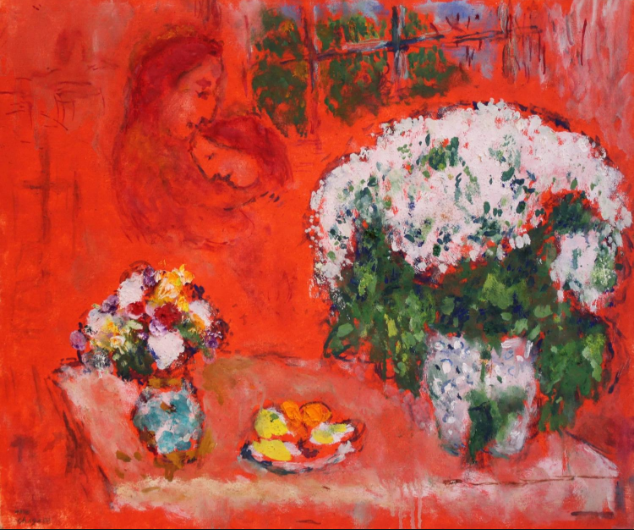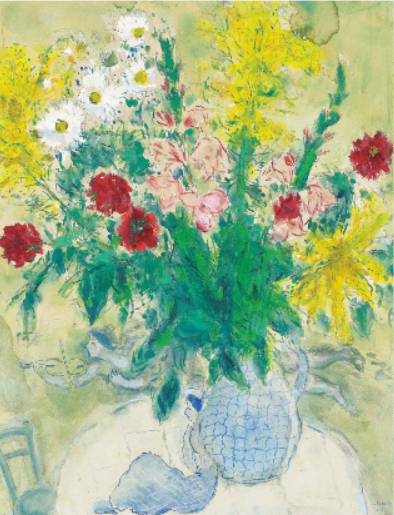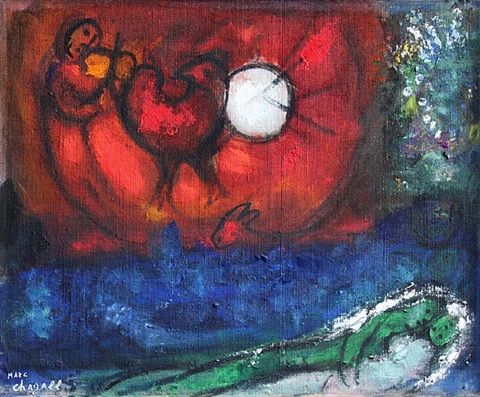Art & Exhibitions
artnet Asks: Stern Pissarro and their Major Chagall Show
Opening tomorrow in London.

Opening tomorrow in London.

Artnet Galleries Team

Based in London, Stern Pissarro Gallery focuses on exciting examples of Impressionism and Modern Art with works by not just the talented Pissarro family, but also Alfred Sisley, Claude Monet, Paul Gauguin, and many more. Their next exhibition, opening tomorrow on June 16, features an impressive array of Marc Chagall works. With over 40 paintings and numerous works on paper from different periods of the artist’s life, “Marc Chagall: Master of Colours” offers both an exciting opportunity for the public to see works never before exhibited in London, an a unique collecting opportunity as well.
Here, we ask about Stern Pissarro’s current show and their gallery’s esteemed history.
Your upcoming exhibition features a stunning selection of paintings and works on paper, many of which have never been shown in London before. How did this body of work come to your gallery?
At Stern Pissarro Gallery we regularly deal with the works of Chagall, and thus, come into contact with collectors from many parts of the world. We were fortunate to discover a whole collection in Switzerland which has never been offered for sale since it was purchased from Chagall’s son, 30 years ago. The remainder of the works have been obtained from other various sources or are part of our own collection.
Do you have a particular favorite work from the show? Why that one?
With such a strong collection on display, it is difficult to pick one piece out as a favourite. However, Les Fiancés sur Fond Rouge is a quintessential example of Chagall’s work, which includes many of the features that have drawn immense popularity towards the artist. The lyrical red floods the painting, providing it with a richness that transcends many of Chagall’s other works. Explosions of white are used vividly to convey flowers, which were known to have held significant meaning to the artist through their symbolic value, representing beauty, romance, and fertility. The various motifs included in the work are typically disconnected and appear almost overwhelmed in the boldness of the color, as if to invite the viewer to get lost in the sea of red that dominates the canvass.

Marc Chagall, Fleurs dans un Vase Bleu (1936). Courtesy of Stern Pissarro Gallery.
For an artist like Chagall, does his works on paper represent a more accessible entry point for new collectors?
This is definitely a good entry point for new collectors, such as for those who already have works by Chagall and wish to enrich their collection, but especially for Chagall lovers who have always dreamt of owning a work and did not think they would ever be able to. There is great value in purchasing smaller works by great artists and works on paper provide an intimate and personal connection with the artist.
Tell us about Stern Pissarro. Your gallery has an amazing legacy through the Pissarro family, how does that reflect in your approach to curating and dealing?
The name ‘Stern Pissarro’ originates from the marriage of art dealer David Stern to artist Lélia Pissarro, who was taught to paint by her grandfather Paulémile, the son of Camille Pissarro. Together, they manage the day-to-day running of the business. As a result, Stern Pissarro Gallery is rooted in its legacy, which has led it to curate exhibitions that have an art historical significance in the field today. Through her involvement with the gallery, Lélia Pissarro provides an artist’s perspective to the management of the establishment. Works are selected with greater creative and artistic consideration, rather than solely commercial value.
What was your gallery’s first exhibition? How did it go, and what have you learned since then?
The couple’s first exhibition was organized followed an invitation to exhibit at an outdoor location near Oxford. Here, David and Lélia curated their first exhibition dedicated to Camille Pissarro and his descendants, conveying the diversity and artistic links within the four generations of the family. Due to a lack of security, the young couple were required to move all the paintings back and forth every night, keeping them in their hotel room!
The exhibition included many works from the owner’s private collection, which were not for sale. The public responded with great enthusiasm, and the success of the show was unprecedented. David and Lélia were astonished by this success and realised that their idea could be developed on a far greater scale. This concept involves an interest in educating the public on this unique subject, as well as generating sales. This culminated in a large-scale exhibition, lasting six months, which travelled to four museums in Japan, followed by another exhibition held a few years later at the Fort-Lauderdale Museum of Art in the United States.
As a result of their experience working with museums at an early stage in their career, they were able to gain an insight into the academic side of the art world. Today, this knowledge plays a strong role on the way in which the gallery operates.

Marc Chagall, Etude pour la Nuit de Vence (c. 1962–1957). Courtesy of Stern Pissarro Gallery.
What will be your next show? Tell us why we should come.
Our next show will represent the latest period of works by Hugues Claude Pissarro, focusing on his largest oil paintings that demonstrate the way in which he perceives the modern and rural Coast in Ireland. We are hoping that this show will coincide with the release of his biography, which will cover over 60 years of his artistic career.
This exhibition will be a way to immerse oneself into the secret world of an artist.
Additionally, Stern Pissarro Gallery will also aim to host an exhibition dedicated to five generations of Pissarro artists in the near future.